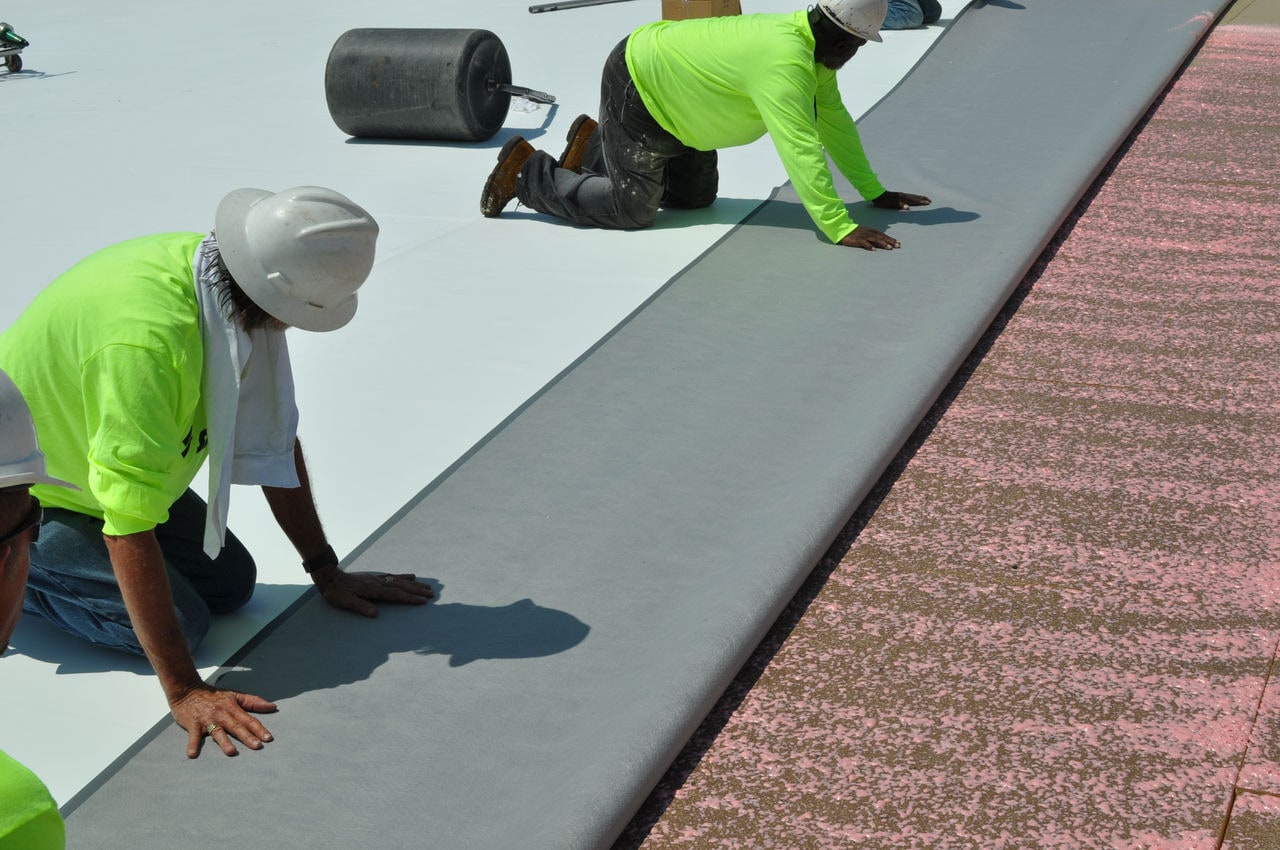Single ply roof membranes are widely used in the construction industry due to their versatility, ease of installation, and durability. These membranes are typically composed of synthetic polymers such as ethylene propylene diene terpolymer (EPDM), thermoplastic polyolefin (TPO), or polyvinyl chloride (PVC). The polymer content within these membranes significantly influences their mechanical properties, durability, and overall performance.
PVC roofing membranes require liquid plasticizers and/or solid plasticizers to be flexible. Ketone Ethylene Ester (KEE) is a polymer, and is also a solid plasticizer. KEE sheets are roofing membranes that are co-polymer based membranes utilizing a blend of KEE and PVC polymer, which is why some single ply manufacturers use PVC KEE as a descriptor for this membrane type. ASTM D4434, "Standard Specification for Poly(Vinyl Chloride) Sheet Roofing," serves are the material standard for PVC-based roof membranes.
ASTM D6754, "Standard Specification for Ketone Ethylene Ester Based Sheet Roofing," serves as the benchmark for single ply membrane formulated with KEE but it is important to understand how polymer content is measured and what it means for the overall chemistry.
To be considered a KEE sheet meeting D6754, the polymer content within the sheet must have more than 50% KEE polymer by weight, but a single ply sheet is made up of much more than just polymer. It is possible, because of how the standard stipulates the measurement of polymer content, to create a membrane that meets the D6754 standard but does not necessarily have a significant percentage of KEE relative to the makeup of the overall sheet.
Analysis of just the polymer does not reflect the overall chemistry of the membrane. A finer analysis of the total polymer content as a percent of the overall composition of the membrane is worthwhile, and a finer analysis can lead to a more appropriate selection of a single ply membrane. The percentage of polymers (PVC and KEE), and the percentage of liquid plasticizer that a sheet contains starts to tell a more thorough story about expected key performance characteristics, such as long-term flexibility, UV resistance, heat resistance, and resistance to soiling, which are important for long-term performance. It is important to know that PVC membranes that meet D4434, but do not meet D6754 requirements strictly because of polymer ratio, can have an equal or greater amount of KEE, can have more PVC, and can have less liquid plasticizer in the sheet than D6754 membranes.
For a much more in-depth discussion on this topic, see Siplast's white paper:


